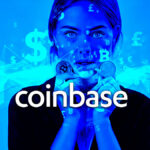The cryptocurrency market has recently highlighted the gains of select altcoins, with SingularityNET (AGIX) experiencing a remarkable sevenfold price increase within a 60-day span. Presently, the coin is experiencing fluctuations as it seeks to stabilize its price trajectory. For those invested in AGIX, identifying crucial sell signals and price levels is essential for predicting its future movement.
Understanding Price Movements of SingularityNET
Between March 10th and 19th, SingularityNET’s price oscillated between $0.90 and $1.47, with difficulty in holding onto this range amid market dynamics. A key moment was when it hit $1.31, where it exhibited a sell signal, synonymous with a potential decline, as indicated by lower peaks in momentum indicators like the RSI and Awesome Oscillator compared to the price peak.
The prevailing market sentiment suggests a potential price correction for SingularityNET, with possibilities of a 30% drop if selling pressure mounts, pushing it towards the $0.90 mark. Conversely, in an optimistic scenario, a rebound from $1.89’s midpoint could occur.
Prospective Market Condition Changes
A favorable shift in the crypto market, particularly if Bitcoin approaches the $75,000 to $80,000 range, may also lead to recovery for SingularityNET around the $1.18 level, initiating a potential uptrend. Successfully converting the $1.47 high range into a support could negate the bearish outlook, though this remains speculative.
Lastly, recent discussions about a merger involving three altcoins within the artificial intelligence segment—AGIX being one of them—could prompt a significant uptick in AGIX’s value. This anticipation could propel the altcoin to new heights ahead of the launch of a novel token named ASI.












